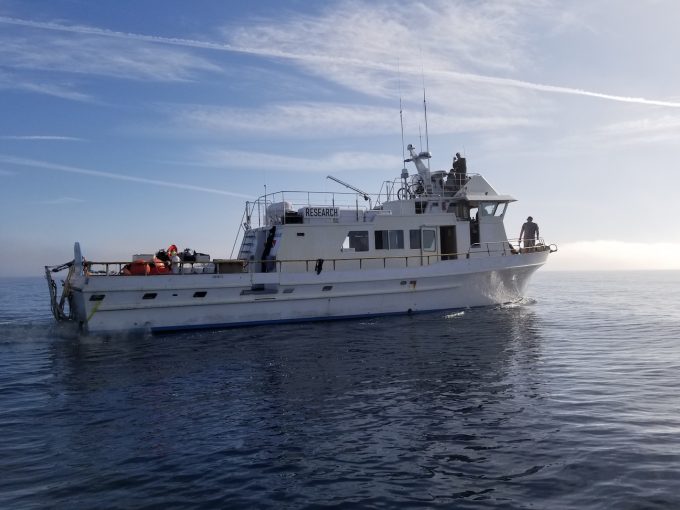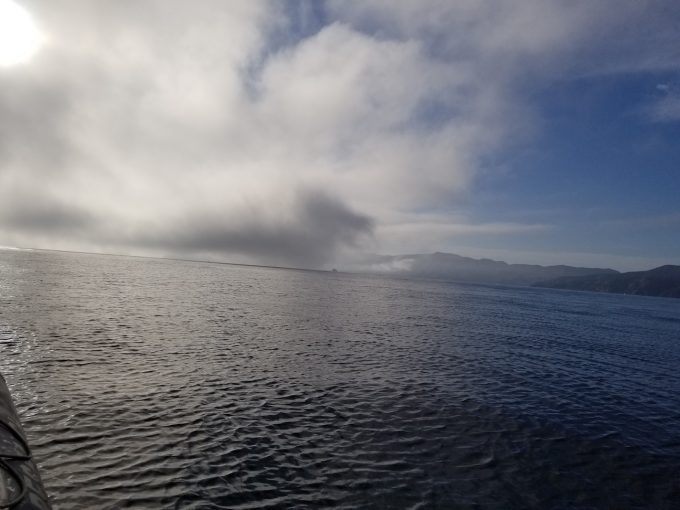The SOCAL Tagless-BRS project is back on the water! SEA is partnering with Cascadia Research, Kelp Marine Research, and NOAA’s Southwest Fisheries Science Center and the talented crew of the M/V Magician (below) on an exciting technology integration collaboration conducting novel studies on the basic behavior and behavioral responses to noise in several dolphin species. Common, bottlenose, and Risso’s dolphins have proven challenging to study with high-resolution tag sensors, but there are important scientific and conservation reasons to understand how they behave and respond to potential disturbances. We described our overall objectives and methodology during our initial effort this spring – please see the below link for more details:

We made major progress in the spring effort described there in understanding how to integrate shore-based visual tracking, unmanned aerial systems to track and quantify spatial orientation of animals, and underwater listening buoys to measure group calling behavior. We collected tens of thousands of images, tracks, and recordings of baseline behavioral patterns of all three species tracked in controlled, experimental conditions. By design owing to the novelty and challenges in doing this in these species, we did not include sound exposure in the spring effort, however. Careful analysis of the approaches used and data collected resulted in a number of adaptations and refinement of the methods to ensure we can succeed in collecting the most meaningful data on responses of animals to meet the project objectives. With those useful lessons, we are now moving carefully forward with the experimental aspects of the study using controlled exposure experiments using simulated military sonar signals.

We’ve just started up our fall field effort over the next two weeks and have had several successful baseline focal follow monitoring sequences with all teams. We have specific protocols and requirements (NMFS permit #19116) to ensure we can successfully and safely complete the experiments involving sound exposure and today the Catalina fog monster (below) limited our ability to conduct an experimental sound sequence. We will provide some subsequent updates on our progress and findings here. Many thanks to all our collaborators and thanks for the support of the Office of Naval Research for this project. For more information or interest in this project, contact Brandon.Southall@sea-inc.net.
